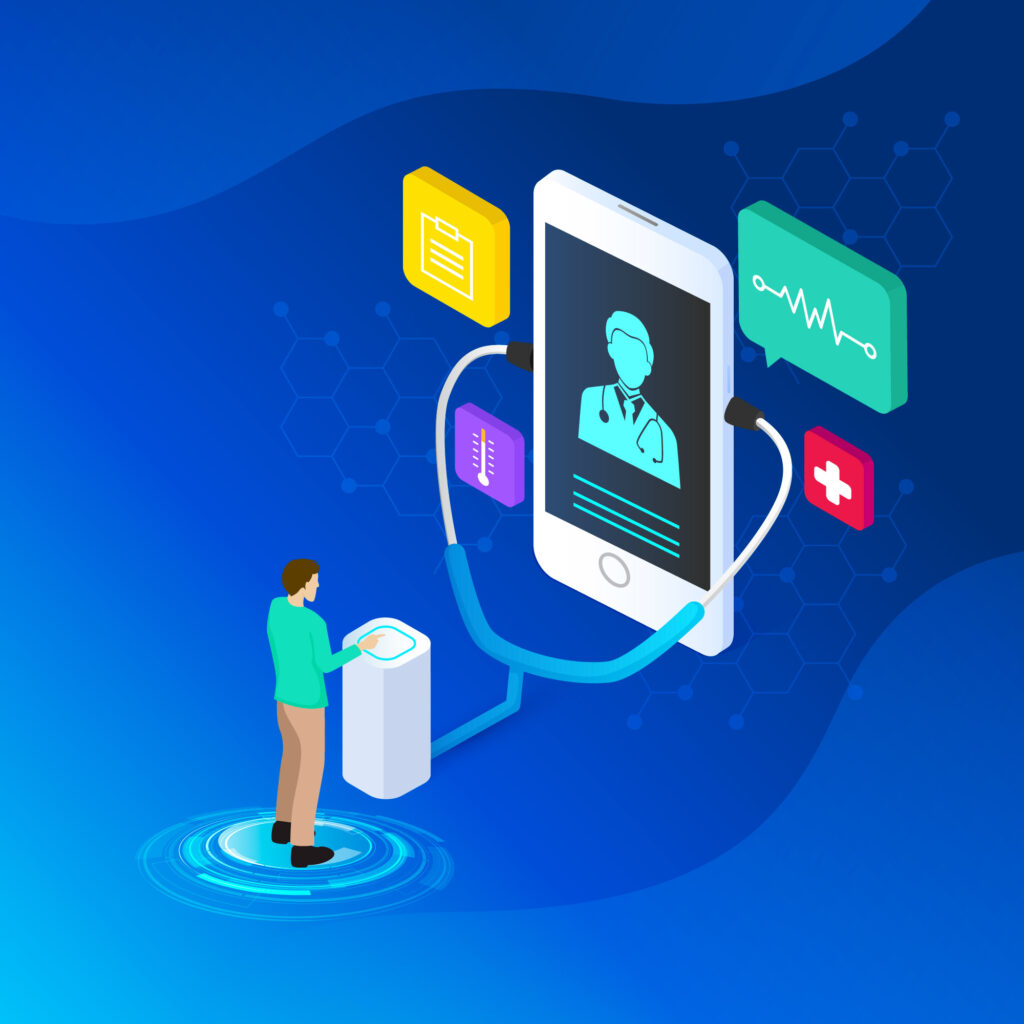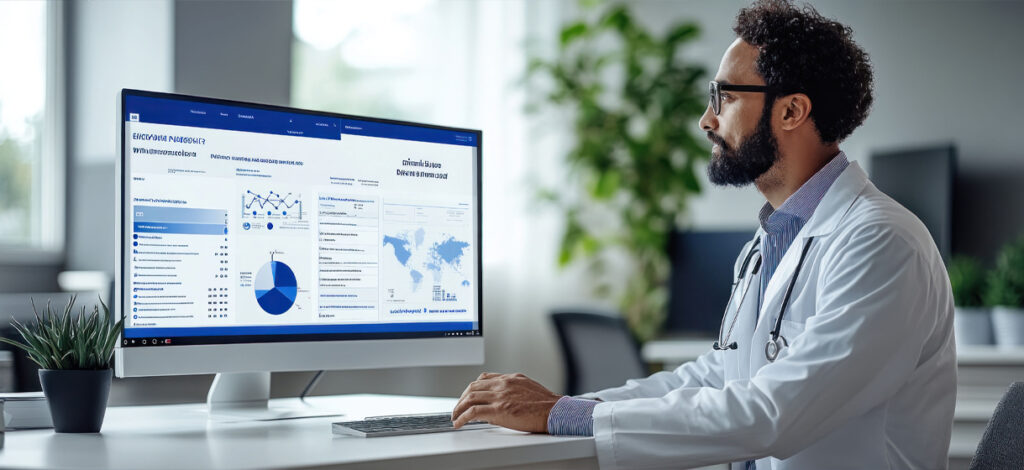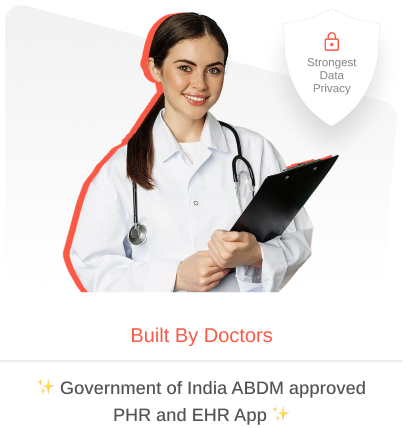Educating Patients on Patient Portals and Health Apps: A Step-by-Step Guide

The rapid digital transformation of the healthcare system has revolutionized i.e. how medical services are delivered and consumed. From online appointment scheduling to real-time access to medical histories, technology allows both providers and patients in unprecedented ways. At the heart of this evolution are patient portals and mobile health applications—tools that put important health information directly into the hands of patients. Patient portals serve as secure digital ways where individuals can access their medical records, lab results, prescriptions and communicate with healthcare providers. Mobile health apps extend this functionality by enabling users to track vitals, set medication reminders, and monitor chronic conditions on the go. Despite their growing availability, the effective use of these tools depends largely on how well patients understand and engage with them. That’s why education of patient portals plays a very important role. Empowering patients to navigate these platforms confidently leads to better communication, improved treatment and more informed decision-making. Moreover, it improves the overall efficiency of the electronic health record systems and ensures smooth health information management. In this guide, we’ll explore a step-by-step approach to educating patients on using digital health tools, featuring Roojh—a modern, intuitive hospital management software built to simplify patient engagement and make digital healthcare more accessible to everyone. Why is Educating Patients Essential? As the healthcare system increasingly adopts digital tools, one challenge occurs in how patients know how to use digital health tools. Despite the availability of patient portals and mobile health apps, many patients struggle with accessing and navigating these platforms due to barriers like limited technological literacy, fear of data misuse, language limitations, and lack of reliable internet access, especially in rural areas. According to a 2023 survey by the Office of the National Coordinator for Health Information Technology (ONC), nearly 40% of patients reported feeling overwhelmed or confused when using online health systems for the first time. For elderly populations, this number increases significantly due to unfamiliarity with digital interfaces. This digital divide directly affects patient engagement in turn to health outcomes. When patients lack the confidence or knowledge how to use health technologies, they miss critical updates, delay medication adherence or skip follow-ups, all can affect recovery or chronic disease management. Educating patients addresses these gaps by promoting digital literacy and enhancing overall trust in the healthcare system. It transforms passive patients into active participants in their care journey, leading to improved communication, greater transparency and better management of personal health information. From a provider’s perspective, this also supports more efficient health information management. When patients know how to update their records, track their symptoms, or share relevant data through portals and apps, it reduces the administrative burden on clinics and ensures a more accurate and holistic view of the patient’s health history. In practical, solutions like Roojh offer user-friendly interfaces and step-by-step guidance that make the adoption of these digital tools easier. Hospitals using Roojh have seen a measurable increase in patient satisfaction and participation, simply by investing in basic onboarding and tech education during appointments. By closing the knowledge gap, patient education becomes the foundation of truly connected and patient centered digital care. Step-by-Step Patient Education Framework Step 1: Awareness and Introduction The first step in patient education is simply making them aware that these tools exist and can make their lives easier. Most patients still rely on traditional methods like calling the clinic or visiting in person to check appointments or access test results. That’s why creating awareness through multiple channels is essential. Hospitals and clinics using Roojh can leverage flyers at reception desks, SMS notifications post-appointment, and direct physician recommendations during consultations to introduce the benefits of patient portals and mobile health apps. This multichannel approach ensures patients are informed in a way that’s accessible to them. Highlighting features like 24/7 access to records, reduced paperwork, and faster communication can help patients understand the immediate benefits of using Roojh. Visual branding, such as posters with QR codes leading to the app download, can boost engagement at clinics. By positioning Roojh not just as a patient management software but as a personal health assistant, healthcare providers can build curiosity and motivate patients to take the next step. Step 2: Easy Onboarding and Registration Once awareness is created, the next important step is onboarding. The sign-up process should be simple, secure, and stress-free. Roojh streamlines this experience with one-click sign-ups and OTP-based logins, removing the common friction points that discourage new users. At the clinic level, front-desk staff or health navigators can guide patients through their first login. Hospitals can set up digital kiosks or assign tech-savvy staff to assist with app downloads and profile creation, ensuring no patient is left behind. Roojh’s intuitive design is built for inclusivity, offering an interface that doesn’t require tech expertise. Clean layouts, simple menus, and easy to understand icons make navigation more easy. Smooth onboarding sets the tone for a positive digital experience and reduces drop-off rates. When patients feel confident using Roojh from the start, they’re more likely to use it regularly to manage appointments, lab results, and prescriptions which are the key components of any good patient management software. Step 3: Hands-On Training Training patients to use health portals effectively ensures they fully understand the app’s capabilities and can maximize its use. Roojh encourages hands-on learning through a combination of group classes and visual learning tools. Hospitals can organize small workshops in waiting areas, where trained staff demonstrate how to book appointments, check lab reports, and request medication refills using the app. Additionally, personalized sessions can be offered to patients needing extra help, such as elderly users or those with limited tech experience. Instructional videos and printed booklets available in clinics help reinforce learning after the session. Roojh also supports touchscreen kiosks, allowing patients to interact with a demo version before committing to the full platform. Step 4: Demonstrate Key Features Understanding what the app can do is important. Patients are more likely to stay engaged when they see the value of the
EHR Implementation Costs: What You Need to Know

Electronic health record systems (EHR) have become an essential component of modern healthcare, streamlining patient data management, enhancing workflows, and improving patient care. While their benefits are undeniable, the implementation of these systems comes with significant financial considerations. Understanding the costs associated with EHR implementation is important for healthcare providers to budget effectively and maximize their return on investment. From initial setup expenses to long-term maintenance, every stage of the process requires careful planning. In this blog delves into the critical cost factors involved in adopting an EHR system and how organizations can strategically manage these expenditures. Key Cost Factors Considering EHR Implementation Initial Investment Costs Implementing an electronic health record system requires a substantial initial investment. Healthcare facilities must purchase the EHR software, hardware components such as servers or cloud-based solutions, and other necessary infrastructure. Additionally, integration with existing healthcare systems can increase upfront expenses. Customization is another cost factor, as many organizations require tailored solutions to meet their operational needs. Data migration from legacy systems to the new platform is often complex and time-consuming, necessitating technical expertise and adding to implementation costs. Healthcare providers must allocate adequate funds for these initial expenses to ensure a smooth transition. Training and Staff Onboarding Training is a crucial aspect of EHR adoption. Without adequate training, healthcare professionals and administrative staff may struggle to utilize the system efficiently, leading to operational disruptions. Training programs often include workshops, online courses, and hands-on practice sessions to familiarize users with the software. Costs may also arise from hiring external trainers or developing in-house training modules. Well-structured training ensures that employees can navigate the new patient management software effectively, minimizing errors and enhancing productivity. Investing in training not only improves system adoption but also optimizes workflow efficiency within the organization. Ongoing Maintenance and Support Beyond the initial investment, organizations must budget for ongoing maintenance and technical support. Regular software updates, security patches, and troubleshooting services are necessary to keep the EHR system functional and secure. Subscription fees for cloud-based EHR solutions and costs associated with a dedicated IT support team contribute to long-term expenses. Effective health information management requires continuous system optimization, ensuring smooth operations and data integrity. Without proper maintenance, healthcare facilities may experience system failures, security vulnerabilities, and reduced operational efficiency, making proactive management essential. Data Security and Compliance Costs Ensuring compliance with healthcare regulations is a fundamental aspect of EHR implementation. Protecting patient data is critical, requiring robust cybersecurity measures such as encryption, multi-factor authentication, and intrusion detection systems. Compliance with HIPAA and other data protection laws necessitates regular audits, legal consultations, and investments in security infrastructure. Healthcare providers must allocate funds for cybersecurity training to educate staff on best practices for data protection. A failure to meet regulatory standards can result in significant legal penalties and reputational damage, making security investments a non-negotiable expense. Customization and Integration Expenses Many healthcare facilities require customized EHR solutions tailored to their specific workflows. Customization may involve developing specialty-specific templates, modifying system functionalities, and integrating third-party applications such as laboratory management or billing software. Seamless interoperability within the healthcare system is crucial for enhancing efficiency and patient care coordination. However, the more customization a facility requires, the higher the associated costs. Balancing customization within budget constraints is essential to achieving an optimal solution that meets operational needs without excessive spending. Downtime and Productivity Loss Transitioning to an EHR system often results in temporary disruptions to daily operations. Staff members need time to adapt to the new system, which can lead to slower patient processing and potential revenue loss. To minimize productivity loss, healthcare facilities can adopt phased implementation strategies, allowing different departments to transition at different times. Running parallel operations with legacy systems can also ease the shift, ensuring that critical processes continue without major disruptions. Planning for downtime costs and developing strategies to mitigate workflow interruptions are essential to maintaining service quality during implementation. Return on Investment (ROI) Considerations Despite the high upfront costs, electronic health record systems offer significant long-term financial and operational benefits. Improved efficiency reduces administrative burdens, while enhanced data accessibility leads to better patient outcomes. Automation of routine tasks, streamlined documentation, and real-time data access contribute to increased productivity. Additionally, healthcare facilities may qualify for government incentives or reimbursements for EHR adoption, further offsetting costs. By carefully assessing potential savings and improvements in service quality, organizations can justify their investment and ensure long-term profitability. Read More: Electronic Health Record Systems (EHR): A Complete Guide Conclusion EHR implementation involves a series of complex financial and operational decisions. From initial investments to ongoing maintenance, security, and productivity considerations, healthcare providers must strategically manage resources to maximize the benefits of their patient management software. While the costs can be significant, the long-term advantages—such as improved health information management, enhanced patient care, and streamlined workflows—make EHR adoption a worthwhile investment. By carefully planning each stage of implementation and prioritizing staff training and security, healthcare organizations can ensure a smooth transition and maximize the value of their EHR systems. Roojh provides the best solutions to help healthcare providers effectively manage EHR implementation costs while optimizing efficiency and compliance.
Roojh: The All-In-One Hospital Management System

The health industry continuously responds to the rising standards of efficiency and accuracy demanded even more today from healthcare facilities and their associated emerging desires for better and more convenient treatment. As more hospitals and clinics grow to supply a growing population, it will always be getting tougher for them to manage their operations. This is where hospital management software, like Roojh, earns its place-to streamline processes and transform the style with which an institution operates. What is Hospital Management Software? The hospital management software constitutes a complete electronic solution for linking and automating all the functions relating to the administration of a hospital, from patient records to appointment scheduling, billing, inventory, and so on. In other terms, HMS is just an integration of various functions in one system to enhance coordination among departments, reduction of errors, and provision of quality service. What Makes Roojh Unique? Roojh is a state-of-the-art hospital management software which redefines how healthcare organizations conduct their day-to-day activities. Using cutting-edge technology and intelligent features, Roojh is a comprehensive solution that meets the specific needs of hospitals, clinics, and multi-specialty centers. Essential Characteristics of Roojh Hospital Management Solutions Appointment Scheduling: Roojh saves the time of patients or doctors for fixing appointments by optimally employing the available resources. Patient Data Management: Managing patient records becomes easy with Roojh. This system keeps medical history, prescriptions, and diagnostic reports secure and retrieves them with just a few clicks. Billing and Financial Management: Billing is made easy through Roojh, including generating and tracking payment receipts with invoices; this brings with it accuracy and transparency. Inventory Management: Keep track of the stocks of available medical supplies, medicines, and equipment with the Roojh inventory management system to prevent wastage and ensure timely replenishment. Telemedicine: Roojh also provides seamless telemedicine, bringing health into homes for patients. Analytics and Reporting: The analytics feature from Roojh allows generating reports concerning the entire operation of the hospital, patient trends, as well as its financial health, hence supporting data-motivated decision-making. Read More: The Essential Role of Hospital Management Software in Modern Healthcare Roojh’s Hospital Management System Benefits Why There Is a Need for Solid Management Software in Hospitals? Hospitals need new management software because relying on old systems in the fast-moving contemporary healthcare environment ends in inefficiency, breaches of data, and frustrated patients. The modern hospital management software solutions such as Roojh are particularly equipped to handle: Conclusion Indeed, in this present age of necessary advancements, hospital management software is no longer a luxury but a necessity of pursuit by health institutions in the quest for excellence. With excellent innovative features backed by an uncompromisingly user-centric design layout, Roojh is well equipped to revolutionize the way hospitals perform their operations. Be it a tiny clinic or a vast multi-specialty hospital, whether you want to bring care at the next level or keep you updated with the latest trends in the competitive healthcare world, Roojh is here to make it all happen. Grab your future in healthcare management with Roojh today!
How Patient Management Software Helps Reduce Medical Errors

At present, healthcare remains a topic that is changing all the time- it is almost always patient safety. Medical errors do not merely put patients at risk, but they also waste health fortune built by health professionals. Hospitals and healthcare professionals can use Patient Management Software the great technology that enhances accuracy, speeds up health processes, and makes important documents available-towards minimizing medical errors. Let us now look at how patient management software will bring down the amount of medical errors dramatically and why Roojh is a great choice for health facilities trying to operate their facilities in an optimized manner. The Role of Patient Management Software in Reducing Errors Medical errors are common due to very poor communication, lacking information, or even slow processes. With patient management programme, these problems can be solved: Centralized Data Management The patient management software allows all patient information-gathering operations, such as history regarding prior illnesses, medications received, test results, and treatment plans, to be consolidated in one system-safeguarding against missing any important details or leaving anything incomplete so that healthcare providers can make better decisions with full knowledge of the patient’s condition. With Roojh, healthcare surfaces patients’ records anywhere at any time during the practice, ensuring reduced misdiagnosis or delay due to scattered information. Error-Free Prescription Management The most common types of medical errors are most frequently medication errors. Such accurate, legible prescriptions can be produced by patient management software, preventing the risks of handwriting errors.It also shows potential incompatibilities or allergic reactions based on indication for a certain treatment. Roojh has modern prescription tools to mitigate this risk, allowing doctors to give patients accurate and safe medication guidelines. Automated Appointment Scheduling and Reminders When someone misses an appointment or when their appointments overlap, the consultations turn rushed and such hurried consultation tend to have more chances of mistakes. Patient management software automates the scheduling, sends reminders to patients, and ensures a more seamless workflow between healthcare staff. Roojh makes appointment setting really easy, even allowing patients-and-providers to stay aligned without overlaps or missed care opportunities. Seamless Communication Efficient and effective communication among the medical practitioners, the patients, and the other departments is essential to reduce errors. The patient management software avails this seamless communication by offering a platform through which the updates, reports, and instructions are shared. For the management teams, Roojh makes clinical collaboration effective such that miscommunication can be limited to reducing possible errors. Compliance with Healthcare Standards The management programs for patients typically have within them compliance resources that comply with the regulations such as HIPAA or ABDM as in India. They keep patient data safe and cut down chances for errors which may arise due to outdated or non-compliant processes. With Roojh compliance features, healthcare providers would be aligned with the latest standards for accuracy and security in patient management. Read More: Patient Management Software: Enhancing Health Efficiency Why Choose Roojh? Roojh is the software that does more than all those regular patient management software. Roojh is a complete solution to the modern healthcare facility. Check out the features that makes Roojh different: Conclusion Speed is a defining characteristic of the healthcare system today. Therefore, one of the major approaches to improving patients’ outcome and enhancing trust in the provider is to reduce medical errors. Patient Management Software plays a vital role in this respect through streamlining operations, data management, and providing better communication among healthcare stakeholders. However, Roojh goes ahead, offering a very powerful, user-friendly solution keeping in view the peculiarities of modern healthcare. Investing in Roojh is to invest in a solution that, besides reducing errors, would enhance overall performance in your facility. Are you ready to improve patient care and cut down on medical errors? Don’t wait any longer to discover how Roojh can revolutionize your practice!
Patient Management Software: Enhancing Health Efficiency

Patient management is a very important area in a developing health care system that focuseson quality care and making the processes very efficient. Patient Management Software or PMSin the healthcare setup becomes quite a revolutionist in dealing with tasks related to patients.Such as, appointment scheduling and medical records are also done through PMS, whereeverything is kept in the same path to work more efficiently and derive great satisfaction fromthat in the life of the patient. Let us now go through the features and benefits or importance ofpatient management software in modern healthcare. What is Patient Management Software? Patient management software is the digital medium that is meant for simplifying and fine-tuningthe performance of multiple areas of a person’s life concerning patient care and administration.It furnishes healthcare facilities with an integrated system to manage appointments, histories,billing, and even communication with a unified approach toward patients. Benefits of Patient Management Software Improved Patient Care Ensures timely and personalized care by organizing patient informationefficiently. Operational Efficiency Reduces administrative workload, allowing healthcare staff to focus on coretasks. Data Security and Compliance Protects sensitive patient data while adhering to healthcare regulations. Enhanced Communication Streamlines interactions between patients and healthcare providers, fosteringtrust and satisfaction. Cost and Time Savings Automates repetitive tasks, saving time and reducing operational costs. Read More: Why Every Healthcare Facility Needs a Patient Management Software Solution? Roojh: Your Best Patient Management Solution Medical practitioners who require a versatile but very durable solution for their patientmanagement software may find one very appropriate from Roojh. Aside from being user friendly,Roojh boasts advanced applications and has well-placed emphasis on data security, allowingcare facilities to provide better patient care with optimized operations. Considerations When Investing in Patient Management Software One requirement for the software is to be patient management software, as the whole worldnow is a jigsaw puzzle, especially in patient satisfaction and productivity. PMS would helphealthcare providers: – Limit mistakes and boost proving accuracy with patient care– Guaranteed patient care provision in time– Adopt modern technology to act favourably amidst competitors Conclusion With the transformation in the healthcare industry, patient management software indeed bridgesthe gap between administering and patient care. Implementing Roojh into the healthcarefacilities will improve outcomes, result in better quality of treatment, and set new standards inexcellence. Embrace the future of managing patients and, indeed, experience the positiveimpact on the facility.
Why Every Healthcare Facility Needs a Patient Management Software Solution?

In the modern fast-paced healthcare environment, medical institutions are increasingly required to deliver quality care without sacrificing operational efficiency. With greater patient volumes and more intricate administrative tasks, healthcare facilities need effective solutions to help streamline their processes. Such a solution is Patient Management Software, which has now become an essential tool for healthcare providers looking to upgrade patient care, improve operational efficiency, and increase overall satisfaction. Patient Management Software Patient Management Software is an all-inclusive system that could automate and simplify the entire process of managing patient data, appointments, medical history, billing, and several other functions within a medical facility. It minimizes human error, removes dull and repetitive tasks, and promotes the smooth flow of information across departments, physicians, and patients. Key Features of Patient Management Software for Healthcare Organizations Improvement in Patient Care Patient Management Software helps a healthcare organization improve patient care. It allows healthcare professionals easy access to a patient’s medical history, treatment plan, and diagnostic results on the same day. Accessing this information immediately, especially in emergency situations, greatly assists healthcare professionals in making critical decisions. Streamlined Administrative Procedures Managing patient records and scheduling appointments can be even laborious for large-sized health facilities. Patient management software eliminates all these forms of administration work, thereby creating an ease of workload, thereby eliminating the risk to a significant extent and, thereby using resources efficiently. Better Communication Better care outcomes result from improved communication between healthcare providers and patients. Patient Management Software enables smooth communication through appointment reminders, test result notifications, and direct messaging between doctors and patients. This connectivity keeps patients more engaged with their treatment plans and makes their experience more positive. Security and Compliance It contains sensitive patient information that the healthcare facility needs to have with the utmost level of privacy and security. Adhering to industry standards like HIPAA, patient management software ensures that all data is stored securely, with access only to the right people. This thus saves patients and healthcare professionals from any potential data breach that could result in legal matters. Effective Billing and Payment Handling Traditional billing practices tend to be time-consuming and prone to errors. In Patient Management Software, there is the integration of features that ensure accurate billing with auto-calculations and speedy payment processing. It limits billing disputes, reduces the cycle time for payment, and generally enhances financial management. Improved Resource Management The patient management software monitors resource usage, including the availability of doctors, equipment, and rooms. This helps prevent bottlenecks and promotes efficient resource allocation, ensuring that patients receive timely care. Read More: Patient Management Software: Enhancing Health Efficiency Why Roojh is a Game-Changer for Healthcare Facilities? Among the patient management software solutions, Roojh is unique for the needs of healthcare facility optimization. It has broad features aimed at satisfying the requirements of healthcare providers and patients. With the help of the Patient Management Software from Roojh, health institutions can streamline operations, increase patient satisfaction, and ease many administrative burdens. It’s a modern solution to the current health care challenges. Conclusion The health industry continues to evolve. And it cannot be ignored as far as competing with others or for their better care goes. Incorporating Patient Management Software becomes a necessity instead of just an option. With the usage of Roojh, efficiency increases in operations, better services are provided for the patient, and work processes within the administrative work is smoothed out. From a single clinic to an extensive health facility, it assists the organizations to run smooth as possible while maintaining standards required, which eventually result in best patient outcomes. If you’re in search of a dependable, all-encompassing, and user-friendly Patient Management Software, consider Roojh as the solution that will take your healthcare practice to new heights.
Exploring Mindfulness Techniques: For a Calmer, More Focused Life

In today’s fast-paced world, stress has become an inevitable part of our lives. Whether it’s juggling work deadlines, family responsibilities, or personal challenges, our mental well-being often takes a backseat. Mindfulness is an effective way to counteract stress, enhance focus, and promote emotional balance. This blog explores mindfulness techniques such as meditation and deep breathing exercises, ways to practice mindfulness in everyday activities, and valuable tips for managing stress. Mindfulness Techniques – Meditation and Deep Breathing Meditation: The Art of Centring Your Mind Meditation is one of the most effective ways to practice mindfulness. It involves sitting quietly, focusing on your breath, and bringing your awareness to the present moment. Even a few minutes of meditation daily can: a) Reduce stress and anxiety.b) Improve focus and concentration.c) Enhance emotional well-being. How to Start Meditating a) Find a quiet space where you won’t be disturbed.b) Sit comfortably with your back straight.c) Close your eyes and take slow, deep breaths.d) Focus on your breath. If your mind wanders, gently bring your focus back. Deep Breathing Exercises: A Quick Stress Reliever Deep breathing is a simple yet powerful mindfulness tool. It helps calm your nervous system and brings your attention back to the present. Technique: Box Breathing a) Inhale deeply for 4 seconds.b) Hold your breath for 4 seconds.c) Exhale slowly for 4 seconds.d) Pause for 4 seconds before repeating. Mindfulness in Everyday Activities Mindfulness isn’t confined to meditation sessions. You can incorporate it into your daily life through simple activities. 1.Mindful Eating Instead of rushing through meals, take time to savor each bite. Pay attention to the flavors, textures, and aromas of your food. 2.Mindful Walking Take a walk outdoors and focus on the sensation of your feet hitting the ground, the sound of birds, or the rustling of leaves. 3.Mindful Conversations Be fully present when speaking with someone. Listen attentively without planning your next response. Tips for Managing Stress with Mindfulness Start Small – Begin with just five minutes a day. Gradually increase the time as you get more comfortable. Create a Routine – Set a specific time for your mindfulness practice, such as in the morning or before bed. Be Patient – Mindfulness is a skill that improves over time. Don’t be discouraged if your mind wanders frequently in the beginning. Read More: Roojh: the All-In-One Hospital Management System Conclusion Practicing mindfulness doesn’t require major lifestyle changes or special tools. It’s about making a conscious effort to stay present and appreciate the moment. By incorporating meditation, deep breathing exercises, and everyday mindfulness into your routine, you can significantly reduce stress and improve your overall quality of life. Start small, stay consistent, and watch how these practices transform your mental and emotional well-being.




